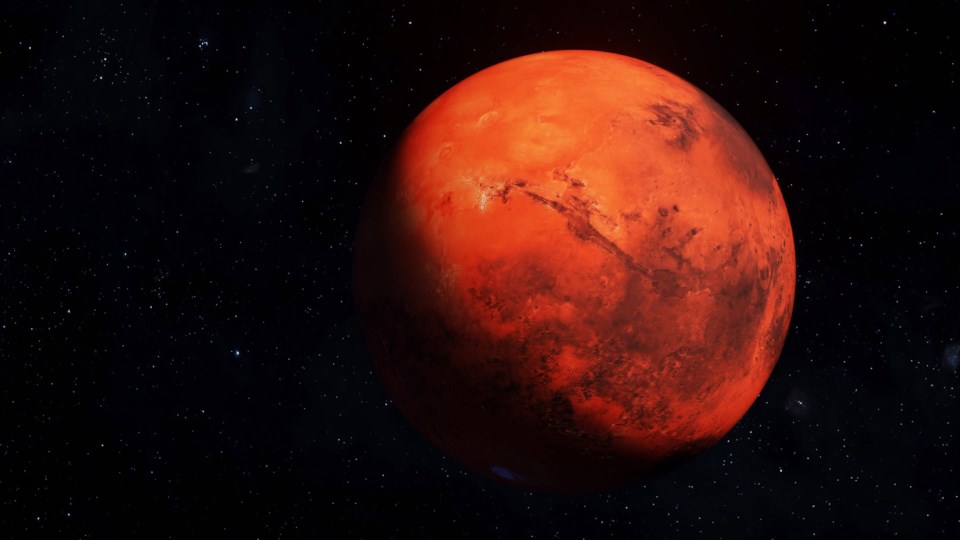The moon occults Uranus for most observers in North America on Jan. 1; Jan. 3, Mars is almost occulted – 0.5 degrees to the north. The moon is full Jan. 6. On the following day, one of the Gemini twins, Pollux, is 1.9 degrees north of Luna. Jan. 8, the moon is at its furthest from Earth – apogee of 406,458 km. Last quarter is Jan. 14, and new moon is Jan. 21. On that same day, the moon is at its closest to Earth – perigee of 356,568 km. Jan. 23, Saturn is four degrees north, and Venus is three degrees north; Jan. 25, Neptune is three degrees north; Jupiter is 1.8 degrees north; and, Jan. 28, Uranus is 0.9 degrees south. All of which indicates that these planets line up across the southern sky over seven nights from west to east. Mars is almost occulted again Jan. 30 at 0.1 degree north of the moon.
Mercury is gradually sliding in front of the sun until it reaches inferior conjunction Jan. 7, to reappear about mid-month in the eastern morning sky. Unfortunately, the ecliptic is close to the horizon during northern winter, so this apparition is best when viewed from the Southern Hemisphere.
Venus, on the other hand is shining brightly in the western evening sky at one of the best apparitions for 2023! Saturn and Venus are in conjunction Jan. 22, followed the next evening by the moon joining in to make a trio. This will be a difficult observation since the three bodies are close to the horizon at dusk.
Mars starts off the month with a reprise of its December occultation, except not for northern viewers. The Red Planet has been retrograding since early November and becomes stationary Jan. 12, to begin prograde motion among the stars of northern Taurus – the Hyades and Pleiades. Mars is occulted once again by the moon (as expected, one lunar month later) Jan. 30 – a close approach for us northern observers.
Jupiter begins the year in the evening sky shining against the stars of Pisces, the fish. At sundown, Jupiter is due south, setting around midnight. As the month progresses, the gas-giant planet gradually fades away into the southwestern horizon. The moon is 1.8 degrees to the south Jan. 25.
Saturn is in the western evening sky at sundown, much like Jupiter, but closer to the horizon. Try finding the Ringed Planet Jan. 22, snuggled up close to Venus with the moon nearby. You might need binoculars to locate them –Venus not so much, since it far outshines Saturn and the thin crescent moon.
Uranus is well placed for unaided viewing in the constellation Aries, The Ram, shining at magnitude 5.7. The waxing gibbous moon occults the blue-green planet Jan. 1, visible from most of North America. And, again Jan. 28, but only a close call for Western Hemisphere viewers at 0.9 degrees from the moon.
Neptune is close to Jupiter in the western evening sky as the month begins, but you’ll need optical aid to find the dim planet among the stars of Aquarius. Neptune is a little over 30 astronomical units (Earth-sun distances) from us – 4.5 billion kilometres away.
The Quadrantid meteors peak on Jan. 4 at 3:00 UT (Jan. 3 at 9 p.m. CST).
James Edgar has had an interest in the night sky all his life. He joined The Royal Astronomical Society of Canada in 2000, was national president for two terms, is now the editor of Observer’s Handbook, and production manager of the bi-monthly RASC Journal. The IAU named asteroid 1995 XC5 “(22421) Jamesedgar” in his honour and he was recently awarded a Fellowship of the RASC.




